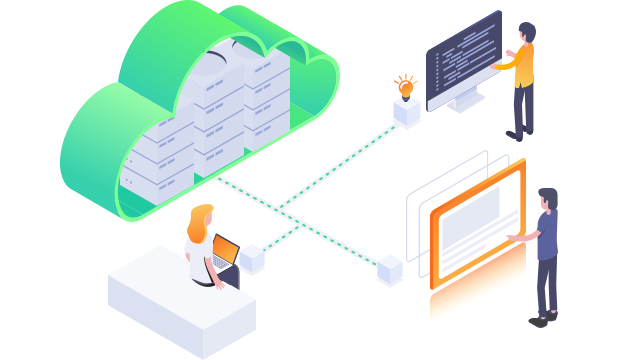AI Cloud Instance
Our cloud service makes it easy to deploy container-based GPU instances in seconds, from either public or private repositories. This means that you can get started with GPU computing quickly and easily, without having to worry about managing your own hardware.

SEALMINER
La machine de minage développée par Bitdeer s’appuie sur la série avancée de puces SEAL pour une efficacité exceptionnelle. Sa toute nouvelle architecture tire pleinement parti des puces, pour une fiabilité, une durabilité et des performances à toute épreuve, même dans des environnements difficiles.
Ressources
Parcourez notre centre de ressources pour trouver ce dont vous avez besoin. Abonnez-vous pour rester informé de nos dernières actualités, annonces et publications.
Abonnez-vous à notre bulletin d’informations

Is Bitcoin Mining Still Profitable in 2024?
2024.05.24
Explore the profitability of Bitcoin mining in 2024 with our comprehensive guide. Delve into the essential factors and stay informed with the latest news.
In 2024, Bitcoin experienced its fourth halving event, reducing mining rewards to 3.125 bitcoins per block. Despite the BTC price soaring to $65,000, many popular mining machines have faced shutdowns due to cost-efficiency issues. This has led many to question whether Bitcoin mining remains profitable in 2024. Explore the profitability of Bitcoin mining in 2024 with our comprehensive guide. Delve into the essential factors and stay informed with the latest news.
What is Bitcoin Mining?
Bitcoin mining is the process of validating transactions on the Bitcoin network by solving complex mathematical problems. Miners use powerful computers to perform these calculations, and in return, they are rewarded with newly minted bitcoins. This process is essential for maintaining the security and integrity of the Bitcoin network.
For a more in-depth understanding of Bitcoin mining, you can refer to the blog on Cryptocurrency Profile - Bitcoin.
How Does Bitcoin Mining Work?
At its core, Bitcoin mining involves using specialized hardware to solve cryptographic puzzles. Each successful solution results in the addition of a new block to the blockchain, a decentralized ledger that records all Bitcoin transactions. The process requires significant computational power, making it both resource-intensive and competitive. To explore the technicalities further, visit our detailed guide on How Bitcoin Mining Works.
Factors that Affect Crypto Mining Profitability in 2024
Hash Rate
The hash rate is a measure of the computational power used in mining. A higher hash rate increases the chances of successfully mining new blocks, but it also means more competition. As more miners join the network, the hash rate rises, potentially reducing individual miners' profitability. In 2024, the global hash rate has surged due to the introduction of more advanced mining hardware, making efficiency and scale crucial for profitability.
Equipment Costs
Despite Bitcoin's price reaching a high of $65,000 in 2024, compared to $20,000 in 2022, the cost of the latest mining equipment has significantly decreased. In 2024, the price of the newest mining machines is around $20 per terahash (T), compared to $80 per terahash in 2022. This means that miners can now purchase higher-performance machines for the lower budget, improving overall mining efficiency.
Energy Consumption
Bitcoin mining is notorious for its high energy consumption. As more people advocate for green mining, major mining enterprises are increasingly turning to clean and renewable energy sources. This not only helps reduce electricity costs but also boosts the economies of regions with excess power and underdeveloped infrastructure, such as Bhutan and South America.
Additionally, besides using renewable hydropower (such as Norway's Kryptovault), Bitcoin miners can also utilize excess heat generated from mining. For example, Kryptovault uses this heat to dry chopped logs in the timber industry. Many small mining operations have adopted similar methods to heat their homes.
Regulatory Environment
The regulatory landscape for cryptocurrency mining varies widely by country and can significantly impact profitability. Stricter regulations can increase operational costs or even lead to mining bans. In 2024, countries like China and India have tightened their regulations, while others like the United States and Canada have adopted more favorable stances, offering incentives for sustainable mining practices, therefore it’s important to understand how regulations and taxes work for crypto for each country.
Market Volatility
The volatility of Bitcoin prices directly affects mining profitability. During a bull market, higher Bitcoin prices can make mining more profitable, while a bear market can reduce returns. Miners need to be adept at reading market trends and adjusting their strategies accordingly. For insights into understanding market dynamics, refer to our blog on How to Read Bull vs Bear Markets.
Ways of Mining Crypto
Self-Built Mining Farms
Miners purchase and install their own mining equipment in their facilities, giving them complete control over operations and equipment. This setup can lead to high returns, especially when Bitcoin prices rise. However, it requires a significant initial investment and technical knowledge to manage and maintain the equipment. Additionally, miners must contend with high energy costs and infrastructure requirements.
Cloud Hosting
Miners can host their equipment at professional mining farms managed by hosting service providers. This reduces the complexity of equipment management and maintenance, as miners benefit from professional facilities with lower electricity rates and better cooling systems. However, hosting services come with fees, and miners need to rely on the trustworthiness of the hosting service provider.
Cloud Mining
Miners rent computing power from cloud mining providers, eliminating the need for physical hardware. This option offers low initial investment and operational costs, with no need to manage and maintain physical equipment. Cloud mining also provides flexible contract terms and computing power options. However, returns may be lower due to service fees, and there is a reliance on the trustworthiness of cloud mining providers.
Strategies for Maximizing Profits
To stay profitable in 2024, Bitcoin miners need to adopt advanced strategies tailored to the ever-evolving market and technological landscape. Here are some in-depth approaches to enhance profitability:
Strategy 1: Optimize Equipment Efficiency
Staying competitive in the mining industry means investing in cutting-edge hardware, but just buying the latest equipment isn’t enough. It’s crucial to keep the mining rigs’ firmware updated to improve efficiency and boost hash rate performance. Manufacturers often release updates to optimize power consumption and overall performance. Overclocking can increase hash rates, but it must be done carefully to avoid overheating and damaging the hardware. Advanced cooling systems like liquid or immersion cooling can significantly reduce the risk of overheating and extend the lifespan of the hardware. Effective cooling also minimizes downtime, ensuring the mining operations run smoothly and consistently.
Strategy 2: Utilize Renewable Energy Sources
Using renewable energy sources is a sustainable and cost-effective solution for miners. Setting up mining operations in areas with abundant geothermal or hydroelectric power, like Iceland or Norway, can drastically cut energy costs. Investing in solar panels or wind turbines can also supplement traditional energy sources, lowering electricity bills and providing a buffer against energy price fluctuations. Pairing renewable energy with advanced energy storage solutions, like lithium-ion batteries, ensures a stable power supply even during periods of low renewable output. Additionally, miners can make use of the excess heat generated from mining.
Strategy 3: Diversify Mining Operations
Diversification is key to managing the risks associated with Bitcoin’s volatile prices. Instead of focusing only on Bitcoin, miners can allocate some of their resources to mine other profitable cryptocurrencies like Ethereum, Litecoin, and Monero. These coins provide alternative revenue streams and can help balance the portfolio during Bitcoin market downturns. Using mining software that supports multiple algorithms allows miners to switch to the most profitable cryptocurrency at any given time, ensuring consistent profitability. Investing in reputable cloud mining services can also provide steady income without the need to manage physical hardware, reducing risks associated with hardware failures or regulatory changes.
Strategy 4: Continuous Market Analysis and Adaptation
Staying ahead in the competitive mining industry requires constant vigilance and adaptability. Miners should regularly monitor market trends, regulatory changes, and technological advancements by subscribing to industry news, participating in forums, and attending conferences. Based on market analysis, miners should be prepared to adjust their strategies, which might involve reallocating resources, switching mining locations, or investing in new technologies to maintain profitability. Forming alliances with other miners, energy providers, and technology firms can offer strategic advantages through shared resources, reduced costs, and enhanced innovation.
Get Started with Bitcoin Mining at Bitdeer Today!
Bitdeer offers a comprehensive knowledge hub and state-of-the-art hardware for both seasoned and novice miners. Whether you're looking to buy a mining machine or explore cloud mining, Bitdeer provides the tools and resources to help you succeed in the competitive world of cryptocurrency mining. Join Bitdeer today and take the first step towards maximizing your Bitcoin mining profits in 2024.
*Information provided in this article is for general information and reference only and does not constitute nor is intended to be construed as any advertisement, professional advice, offer, solicitation, or recommendation to deal in any product. No guarantee, representation, warranty or undertaking, express or implied, is made as to the fairness, accuracy, timeliness, completeness or correctness of any information, or the future returns, performance or outcome of any product. Bitdeer expressly excludes any and all liability (to the extent permitted by applicable law) in respect of the information provided in this article, and in no event shall Bitdeer be liable to any person for any losses incurred or damages suffered as a result of any reliance on any information in this article.








